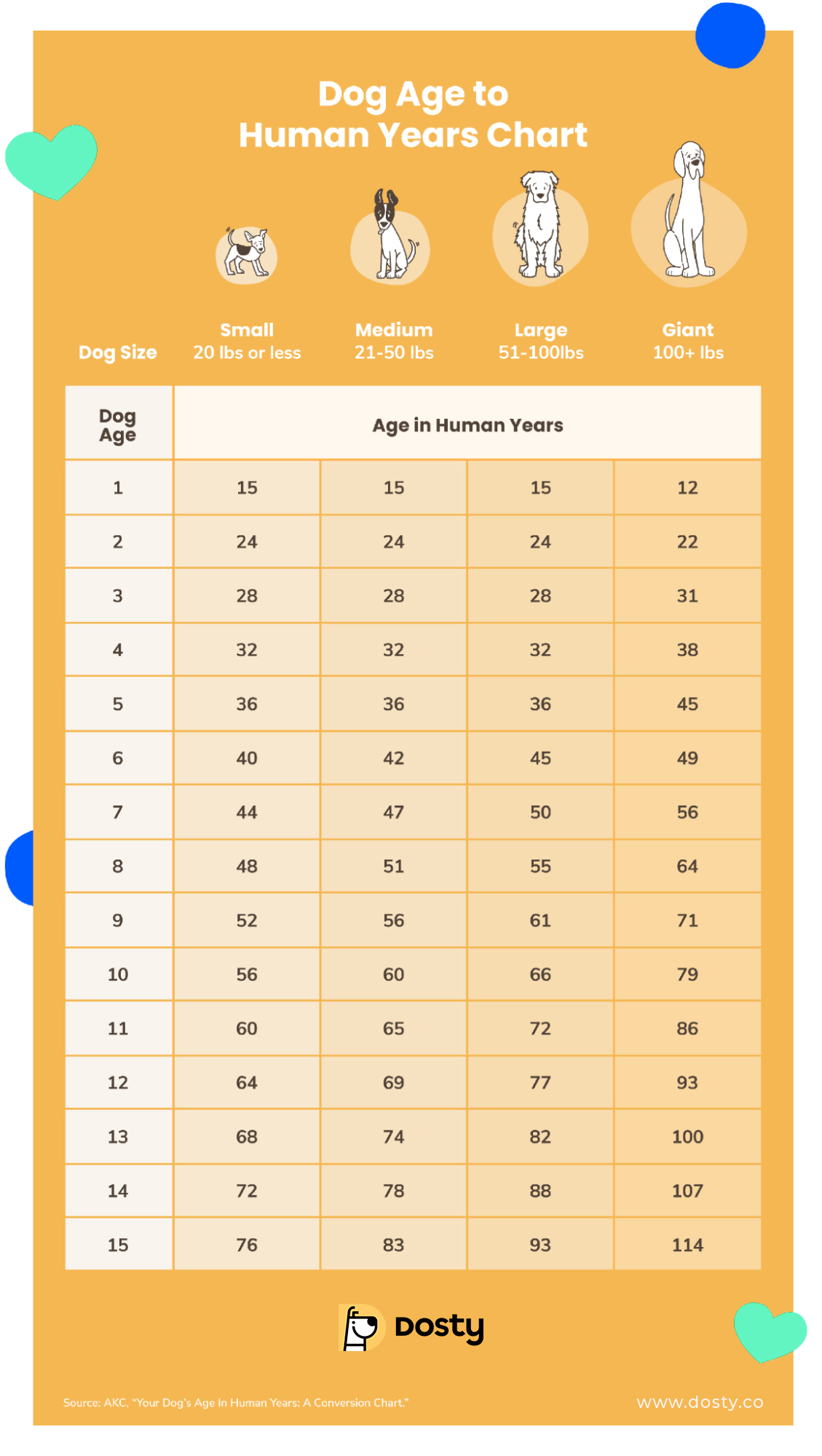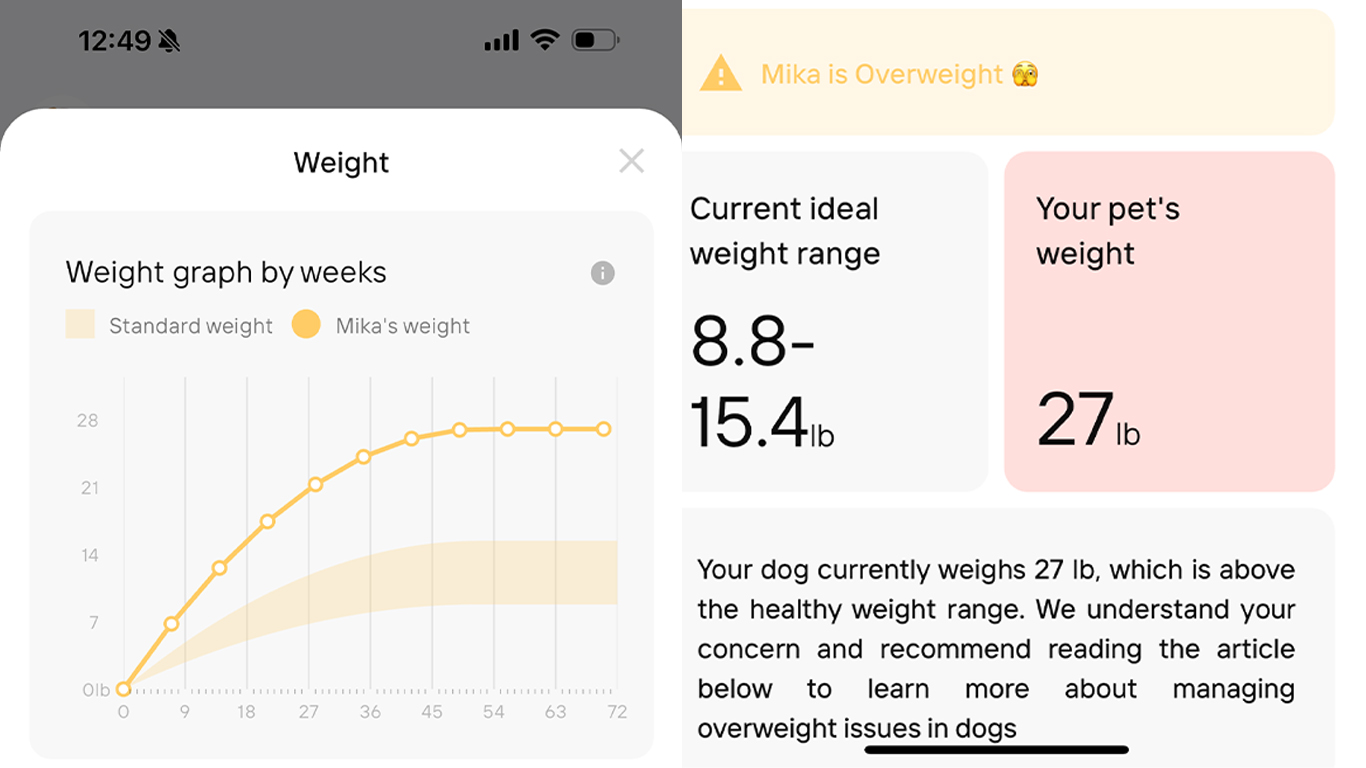On this page
Why the Traditional 7-to-1 Dog Age Rule Doesn’t Work Anymore?
The old 7-to-1 rule is incorrect because the rate at which dogs age varies from dog to dog, depending on size, breed and genetics. Under one factor does not reflect how quickly dogs develop in the early years. A 1-year-old dog is not the equivalent of a 7-year-old child, in fact, by 1, many dogs are already biologically similar to a human teenager.
There is also leeway for the fact that smaller breeds’ life spans, ignorantly, are generally on average longer than those of big ones. With current veterinary science, we now know that we need a more specific equation to allow for these differences. But now, according to a study from the University of California, San Diego, the new method has genetic origins, not just a timetable.
Find your dog's real age and help its real needs with Dosty❗
Forget the antiquated 7-to-1 dog age myth. Your pet’s path to better health deserves the accuracy, not the guesswork. In the Dosty App, you can track vet visits, manage symptoms and receive tailored advice from an expert based on your dog’s actual age, breed and lifestyle, not just a guesstimate.
✅ Get accurate assessments
✅ Custom health reminders
✅ Ask questions, anytime
🐶 Download Dosty and give your dog’s real age the real care it deserves.

What’s Wrong With the Old Dog Age Formula?
The old formula also oversimplifies dog aging by assuming there is a linear progression that is constant over time. Dogs do not age at a rate of seven human years for every calendar year. In fact, they age much more quickly early in life and much more slowly as they get older.
This can result in bad health decisions. But to return to the dog, a 2-year-old dog is biologically more similar to a 40-year-old human than to a 14-year-old. Knowing this distinction allows owners to modify care, exercise, and diet more ideally.
Why Do Dogs Age at Different Rates Than Humans?
Dogs age at a rate that can be more healthily compared to humans given their rate of metabolism, growth patterns, and breed genetics. Small breeds are precocious but age slower and large breeds are slow to mature but age faster and live shorter lives.
This variation also means that a 6-year-old Chihuahua is middle aged, while a 6-year-old Great Dane is a senior. Age-specific aging patterns are not consistent across breeds, which is why more precise age conversions are necessary. The American Veterinary Medical Association says aging can happen in dogs faster depending on the dog’s size, and care should be adjusted accordingly.
How the New Dog Age Formula Was Developed?
The new dog age formula was created using DNA methylation tests, a method that tracks the changes in genetic material that accompany aging. Researchers did so by comparing age related markers in dogs and humans to create a model showing how dogs biologically age.
This new model takes into account the fact that aging is very rapid in the first two years of the dog’s life but then loosens up. It is more realistic index values of different life stages as adolescence, adult and old age.
Who Created the New Dog Age Formula?
The new formula for dog age at various life stages was created by scientists at the University of California San Diego’s School of Medicine, which gives a more accurate way to calculate a dog’s true age in human years. The old 7-to-1 way of calculating dog years was too simplistic, it assumed that all dogs are the same, aging-wise, to men, we all age the same but varying in dog sizes and breeds. But let’s face it: Small dogs live longer, large dogs age faster and all dogs seem to “mature” at breakneck speed in the first few years.
To address this, researchers studied patterns of DNA methylation, biological markers that shift as animals age. Comparing these age-related changes in the DNA of the Labrador Retriever with those of humans, they found similarities that allowed them to create a scientifically based formula.
This set of equations resulted in a new one that more accurately reflects a dog’s biological age, as opposed to just how many years have passed. It was developed to enable dog owners to recognize their pets’ real life stages and adapt care, diet and vet care to a dog’s age.
Step-by-Step Guide to Calculate the New Dog Age Formula
You can calculate your dog's age in human years with this scientific formula:
Human Age = 16 × ln(dog age in years) + 31
Here’s how to do it:
- Note your dog's age in years.
- Take the natural log of the age of the dog.
- Multiply that result by 16. Add 31 to obtain the rough human age.
Example:
Dog age = 2 years
ln(2) ≈ 0.693
16 × 0.693 = 11.1
11.1 + 31 = 42.1 human years

How the New Dog Age Formula Helps Dog Owners
The new formula assists dog owners in making a more informed choice about their dog’s diet, health, and lifestyle by providing a true biological stage, not just age in years. It guides when to get senior checkups sooner, when to modify exercise programs or when to catch age-related health conditions before they become serious.
Realizing your dog is biologically older than their age on the calendar may get owners to intervene sooner and add more healthy years to their pet’s life.
Why Knowing a Dog's True Age Matters?
Having a better idea of exactly how old your dog is can help you fine-tune care. A dog genetically a senior may require more joint support, a low-calorie diet or more regular health screenings, even if they appear young according to the old 7× rule.
This knowledge promotes preventative care and can increase quality of life at every life stage, from puppyhood through the golden years.
❗Age Smarter, Care Better with Dosty App
Knowing your dog’s real age isn’t just a fun piece of trivia, it’s the key to hunting down the best nutrition for preventing obesity, joint problems, and age-related decline. Dosty allows you to monitor your dog’s true weight trends, receive alarms if they’re off target, and manage nutrition or care based on genetic life stage, not old age-based standards.
📉 Spot weight gain early
📆 Receive personalized reminders based on age & size
🔎 Instant access to age-specific care tips
FAQs About Dog Age Conversion and the New Formula
1. Is the new dog age formula accurate for all breeds?
It is a more exact general approximation than the 7-to-1 rule, but breed-specific tools are even better.
2. Can I use this for puppies?
It is most effective with dogs that are over a year old. Puppies mature too quickly to do a linear comparison.
3. Why does it use a natural logarithm?
The logarithm is an acknowledgment of the fact that dogs age rapidly when young and then slow down, unlike the straight 7× rule.
4. How do I calculate ln(dog age)?
You can use a scientific calculator, or simply search online for “ln(x).” And many dog health apps, like Dosty, come with built-in converters.
5. How does the Dosty App help with this?
The Dosty App helps you monitor your dog’s biological age, set care reminders and access vet-backed health tips.
Conclusion – Know Your Dog’s Real Age, Care the Right Way
Knowing the actual age of your dog enables you to give them the proper care during the proper time. The classic 7× rule belies the complexity of a biological process. The new, DNA-based formula, provides more clarity as to your dog’s life stage.
👉 Download the Dosty App for expert-approved advice on each stage of life.


